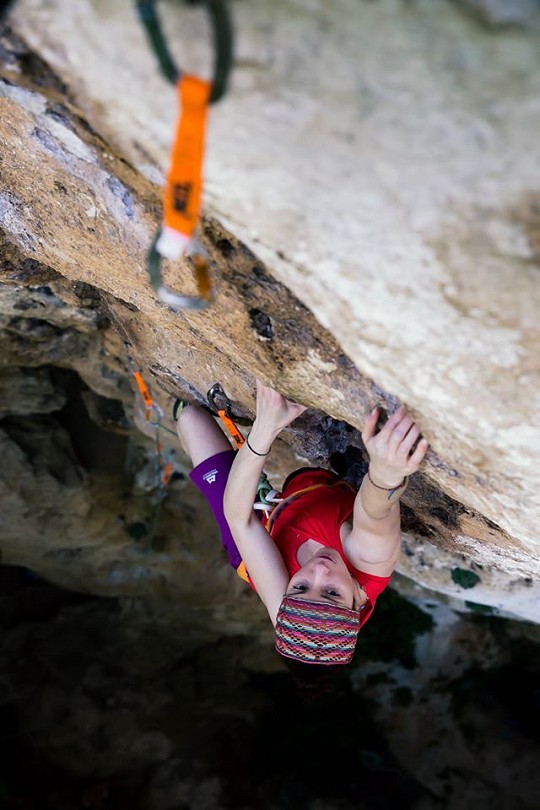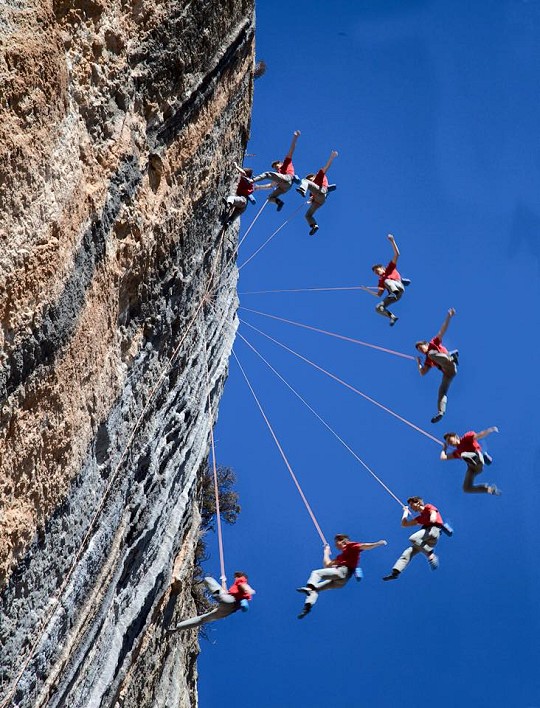
Trad climbing is undoubtedly the principal discipline of the British climbing scene. In the hierarchy of rock climbing pursuits, traditional climbing is widely regarded as the one to aspire to. Seasoned trad climbers often look down their nose at sport climbers and even more so at boulderers, and don't even mention the peculiar breed of indoor climbers...
"It's real climbing!" they explain, before mentioning further reasons for its superiority likely including the following words in some order: adventure, ethical, purest, bold, tradition.
Joking and stereotyping aside, it's no exaggeration to say that for a majority of UK climbers, trad climbing is their preferred discipline. Using the conveniently collated information inputted by UKC users in these graphs, you only have to look at the running total of climbs by type to see a clear winner:
| Type of Climb | Number of Logged Ascents |
|---|---|
| Trad | 2,330,869 |
| Sport | 823,898 |
The average trad grade logged for the last 14 years on UKC stands at HS and the average sport grade comes in at 6a+. Using the Rockfax grade comparison chart, we see that (very roughly) the UKC climbing population is operating on trad at an average technical sport grade difficulty of somewhere between 4a and 5a. On the continent, you can expect the sport grade to be significantly higher in France and Spain, where plentiful bolted sport cliffs and good weather makes pushing themselves on harder moves more accessible and natural. We can see that since the focus of the majority of climbers in the UK is on climbing traditional routes of a much lower difficulty than the sport routes climbed abroad, this consequently affects our basic technical climbing ability and fitness standards overall.

The aim of this article isn't to encourage a Trad vs Sport debate, discuss which is superior or get you to sell your rack on E-bay. It's simply to show that by mixing up your styles of climbing you can learn a thing or two and improve your trad grade at the same time. From someone who came into trad only recently from a competition and sport background, it's astonishing how much I've learned about my climbing by branching out into another discipline and figuring out the crossover points.
The beauty of trad lies mostly in the places it takes you, the situation and the sense of adventure that can be experienced whilst working out gear placements and building belays. Not everyone wants to push their trad grade and you may be happy at whatever grade you are currently operating at, but for those wanting to make the most of their abilities here are some areas which can be improved upon by incorporating some sport climbing (and even some bouldering - shock horror!) into your routine.
Physical Fitness
I'm going to lump aspects such as strength, endurance (aerobic and anaerobic) and power under this heading. Although a long day out on a mountain crag trad climbing with a big walk-in is fantastic aerobic activity, most of the time when trad climbing you are unlikely to be operating at your physical limit, strength or endurance-wise. The risks involved with placing gear without the security of bolts mean that for most of us, easier terrain is preferable and indeed sensible. When sport climbing, you are much more able to try out harder routes, push yourself and even - fall off! By doing some sport or climbing indoors in an environment where you can try physically harder moves, you will gain strength and endurance to push your trad climbing further.

Looking again at the UKC Logbook graphs, the most popular crags and rock types are of the gritstone variety, which by its very nature is rather short - anywhere from 8-15m, there or thereabouts. With such short pitch lengths, it's hard to build up the stamina required for longer pitches of either sport or trad. Try visiting a sport crag or longer trad venue to build up some stamina, or visit your local wall.
Check out this series of Training to Become a Better Climber for tips on building endurance.
Fear of Falling (or overcoming it)
Something which amazed me recently was the discovery that someone who had predominantly trad climbed for 8 years was terrified of falling off on bolts, indoors or out. Coming from a sport climbing background, I couldn't believe how someone could feel so insecure on bolts having relied on natural protection for so many years (with reasonable confidence to boot). Where was this fear coming from?
Think of the old mantra "the leader never falls" and it becomes clear: falling off is a rare occurrence in trad that is best avoided. OK, we don't climb with hemp ropes tied around our waist these days, so it is feasible - but how many more falls do you think a sport climber has taken than a trad climber? Impossible to even make a guess, but for this individual who had been brought up on trad, the thought of downwards motion and hurtling through the air was hard to stomach.
The fear of falling complex is entirely natural and is a survival mechanism, but only one thing could help get rid of the fear - desensitisation. The more you fall off, generally the less scary it becomes. Take practice falls on bolts with an experienced belayer you trust and learn how to fall properly. Sport climbers develop cat-like reactions to softening the impact of falls over time - granted trad is different with two ropes, but learning to avoid catching your leg in the rope, bend your knees and react quickly to avoid hurting yourself is a useful skill and only comes with practice.
The new found mental strength that results from experience of sport climbing falls may help you when climbing trad routes - you may gain in confidence and be able to relax more which will allow you to climb better and focus on gear placement and the potential danger if you fall. The same applies for sport climbing - after a good trad season, I know people who claim to have lost feelings of fear or apprehension when returning to pushing themselves on bolts.
Avoid practice falls on trad - they will erode your gear and potentially be dangerous.
Read an article on overcoming the fear of falling and how to practise falling safely here.
Efficiency of Movement
Trad climbers move in a very specific way, with caution, deliberation and reflection - especially on an onsight. This is in contrast to the movements of a sport climber: powerful, fast and often a bit haphasard. When falling is not an option on trad, climbing slowly and statically - as opposed to dynamically - is crucial for staying on the rock. On a sport climb, the climber is much more able to to throw for that blind hold around the corner since the consequences of a fall are unlikely to be as dramatic. Due to the moves on a sport climb likely being harder than those attempted on trad, moving quickly is advantageous - the likelihood is that you simply won't be able to hang around on the holds like you can on your trad routes!

The same can be applied to bouldering - watch someone who has had a long, busy trad season get back into bouldering and they will spend more time thinking and hanging around than moving! This is a generalisation of course, but climbers who mix up their disciplines regularly will be better at switching from trad mode to sport mode and so on. Good understanding of pace is a vital skill for success in climbing - try engaging your fast-twitch muscle fibres by doing some sport and bouldering from time to time, be it at the crag or down the wall. It may even help your fluidity of movement on trad climbs and allow you to push your grade.
Read my article on efficient climbing style and how to beat the pump here.

Dynamic Belaying
Something else which is very specific to sport climbers and which is rarely encountered by trad climbers is dynamic belaying or 'giving a soft catch.' Depending on how good their partners are (!), a sport climber has probably held hundreds of falls and knows the importance of landing gently into a fall, rather than slamming into the rock. On the contrary, a trad climber has - you'd like to think - held far fewer falls and has likely arrested them in a different manner.
Read our article on dynamic belaying here.
Of course, belaying on trad is a different matter to sport, and giving out a bit of slack or running into the wall isn't always an option. This point is aimed more towards trad climbers who may not have much experience of belaying for sport climbing.
When I first sport climbed with the aforementioned seasoned trad climber, I had to constantly ask for "a bit of slack!" as I was progressing upwards and for a bit more rope when falling off. This isn't because of poor or inattentive belaying, but rather due to inexperience of sport climbing combined with the deeply engrained habits of a trad belay.
I was moving much quicker up the route than I would if I were trad climbing which took them by surprise, and walking in and out of the wall isn't always possible or safe on a trad climb. Sure enough, after pointing out the differences they soon grasped the concept.

About the author...Natalie Berry
Natalie is UKC's Assistant Editor and a 23 year-old climber based in Edinburgh with over 14 years of climbing experience. She is a former GB competition climber and has climbed up to 8b sport and E6 trad. Natalie has been dabbling in trad, winter and alpine climbing over the last while, which has been documented in a film 'Transition' by Hot Aches Productions, due for release in November 2015. Watch the trailer here.
Natalie is sponsored by Mountain Equipment, Scarpa, Deuter and Lyon Equipment (Petzl, Beal) and is a Climbers Against Cancer and Urban Uprising Ambassador. Visit her website www.natalie-berry.com or Facebook Athlete Page.
More Articles




















Comments